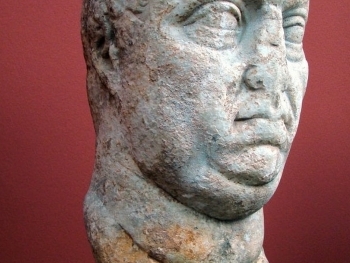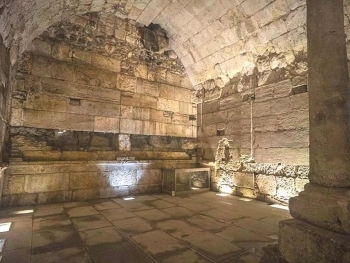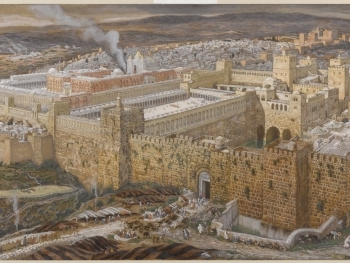Herod's Temple, also known as the Second Temple, was a magnificent structure located in Jerusalem during the 1st century BCE. Built under the rule of Herod the Great, it was considered one of the most impressive structures of its time and played a significant role in the lives of Jews living in Jerusalem and beyond. In this article, we will take a historical journey to discover the grandeur of Herod's Temple and its significance in Jewish history.
Herod's Temple was built on the same site as the first temple, which was destroyed by the Babylonians in 586 BCE. The construction of the Second Temple began in 20 BCE, and it took over a decade to complete. It was designed to be much grander than the first temple, and Herod spared no expense in ensuring that it would be a marvel of architecture and engineering.
The temple was built on a platform that was twice the size of the previous temple's platform, and it was surrounded by a retaining wall that stood over 15 meters high. The temple itself was made of large blocks of white limestone and adorned with gold, silver, and precious stones. The entrance was through the Huldah Gates, which led to the outer courtyard.
The outer courtyard was an enormous space, measuring over 500 meters in length and 300 meters in width. It was used for public gatherings, such as the Feast of Tabernacles, and was the site of the famous sermon on the mount by Jesus. The inner courtyard was smaller and was only accessible to Jews. The inner courtyard contained the altar and the holy of holies, which housed the Ark of the Covenant.
The temple was the center of Jewish worship and pilgrimage, and it played an important role in the political and cultural life of the Jews. The temple was a symbol of Jewish identity and was the site of many historical events, including the cleansing of the temple by Judas Maccabeus in 164 BCE and the trial of Jesus.
Unfortunately, the temple was destroyed by the Romans in 70 CE, and today, only remnants and artifacts remain to tell the story of this iconic structure. Despite its destruction, Herod's Temple remains a symbol of Jewish identity and a testament to the rich history and culture of Jerusalem.
In conclusion, Herod's Temple was a magnificent structure that played a significant role in the lives of Jews living in Jerusalem and beyond. Its grandeur and significance in Jewish history have made it an iconic structure, even though it was destroyed over 2,000 years ago. Herod's Temple remains a symbol of Jewish identity and a testament to the rich history and culture of Jerusalem.




